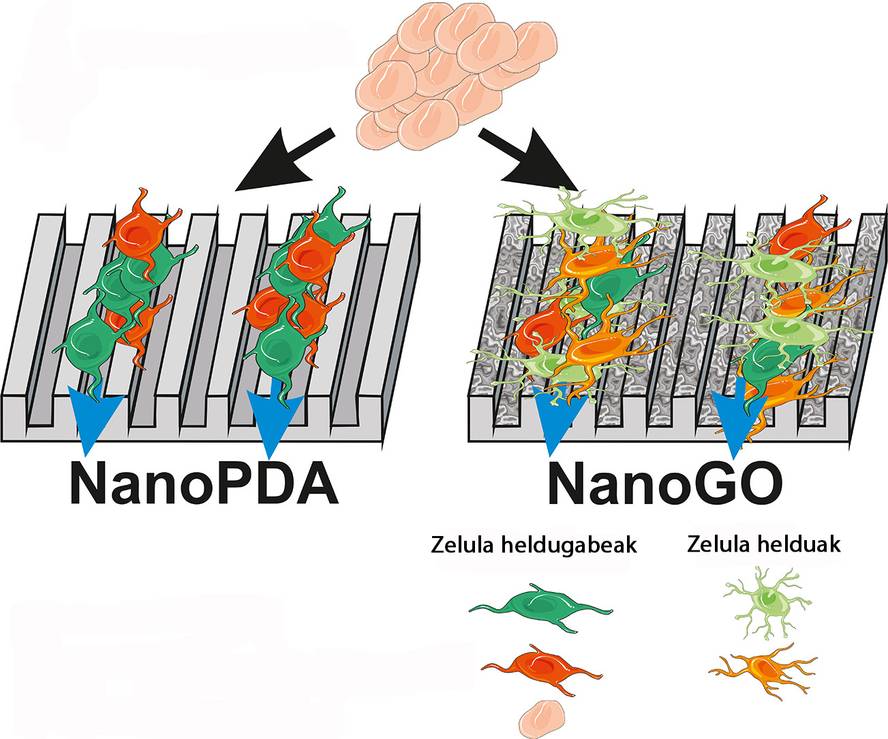Nanostructured scaffolds for neuron-oriented growth
In the field of neural tissue engineering, in recent years there has been a great need to develop materials that allow the differentiation of stem cells and their conversion into neurons. Researchers from the UPV-EHU have created bioabsorbent elastomeric scaffolds that can be useful: the new supports present an ordered nanostructured topography, a kind of acanalation that allows cell growth, while the surface has worked with graphene oxide. The use of new supports has shown that cells grow faster and, instead of dispersing randomly in all directions, as in other cases, grow aligned, which researchers can lead in the desired direction.
This is important in cell therapy of the future, as it will allow the implantation of this matrix in the affected region of nervous tissue, orienting it freely in space and promoting more efficient regeneration. In addition, when the cells are transplanted into any injury, inflammation and cell death usually occur, affecting the development of cells in differentiation. These nanostructured supports can incorporate elements of modulation of inflammation and active interaction with the surrounding cells.
Nanomedicine: UPV researchers have published the achievement in the journal Nanotechnology, Biology and Medicine. Although technology is in its infancy, researchers believe that it will be useful in the future for nerve tissue regeneration.






